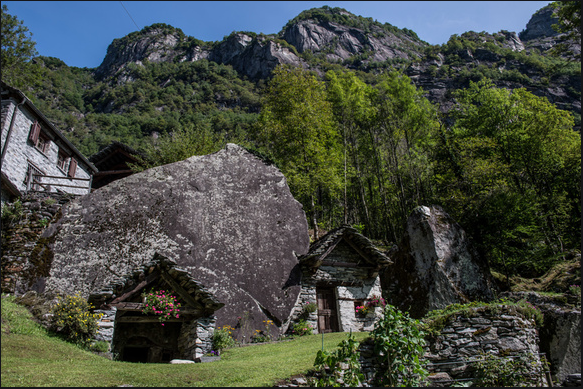
Let’s dispose of the bad news right from the start. If you’re reading this and don’t live in Europe, chances are you’re not going to make it to Switzerland this year. Now for the good news.
Swiss holidaymakers are enjoying their summer staycations, flooding like never before into unsung corners of the country. And by doing so they’re stimulating local economies and encouraging alpine towns and villages to double down on investments they’ve been making in sustainable tourism: cosy accommodation for longer-term stays, hiking and cycling itineraries, the sale of homegrown products, cooking or language courses, or guided walks to learn about the flora and fauna.
It is a moment worth seizing to restore the vitality of villages that have up to now missed out on the tourism boom.
How do you benefit? When you do manage to travel here again, you’ll have more choice. Don’t get me wrong – tourist infrastructure already exists in these little-known places (I’ll name some of them lower down). But often the hotels and restaurants have seen better days. And if you want to learn the names of all the bright blue, yellow and purple alpine flowers you’ll walk past, or how to prepare a local dish, the internet is still your best bet.
I’m convinced that more and more locals, especially younger people, will see the significant uptick in domestic tourism this summer as an opportunity to launch new ventures and provide the missing local flavour. These can become full-time jobs or provide welcome second incomes. For the most fortunate places (I do promise to name them below) this could also be a way to staunch the brain drain, keeping open schools and shops.
In short, it’s a moment worth seizing to restore the vitality of villages that have up to now missed out on the Swiss tourism boom.
So, where are these places? They are the towns and villages in the Lower Engadine and neighbouring Müstair valleys. Both areas are tucked away in the east, not far from the Austrian and Italian borders. Hotels and rental apartment bookings are up 27% compared to last summer, which was also a record year. A little further south, villages in the valleys of Bregaglia and Poschiavo have also been reporting unusually high numbers of visitors. The same goes for the Loetschental – a hidden valley only a few wing flaps, as the crow flies, south of the big-name resorts of the Bernese Alps: Mürren, Wengen, Grindelwald.
These tourist magnets are also doing their utmost to attract the Swiss, and are having success, with some unwanted consequences. Alpinist Dan Moore writes of his strange encounter with the masses in this excellent article.
One of the places that’s still little known, even to Swiss staycationers, is the Bavona valley. That could change later this summer when children across the country begin selling chocolate coins to raise money for – and awareness of – the need to preserve the valley’s cultivated landscape.
I recommend reading my colleague Rino Scarcelli’s story about this remarkable area. Not only can I attest to its stunning natural beauty but also the resourcefulness of the local inhabitants. Instead of being put off by the danger of rockfall from the high, steep slopes, the inventive inhabitants created shelters and grottoes in the nooks and crannies of fallen boulders to store their cheese, chestnuts, and wine.
The danger of rockfall remains a peril, not only in this corner of southern Switzerland, but throughout the Alps. Due to this summer’s high demand for holiday chalets and apartments, the data analytics team from the Tamedia publishing group wanted to know how many of the buildings are at risk.
The team took a close look at the locations of 15,000 rental properties available on an online booking site, e-domizil. They overlaid hazard maps which indicate parts of settlements that are threatened by floods, avalanches, rock or landslides.
Holidaying in a danger zone
One-third of the structures were in a danger zone, they found. But while that may sound alarming, only about 1% were located in the highest “red” category, where a rockslide could happen at any moment, destroying everything in its path. No new buildings or renovations of existing structures are permitted in these designated danger zones. If you’re thinking about renting a house or apartment situated beneath a steep slope, so, you may first want to ask about the risk before booking, or check yourself. The digital hazard maps are available online, and most are free of charge. They’re only in German, French, and Italian, but Google Translate or another translation app should help you find the exact map you’re looking for.
I was excited to hear your thoughts about my last newsletter, and the controversy of naming mountains after people. You reminded me of the decision to restore the name of North America’s highest peak, formerly Mount McKinley, to Denali (“the high one” in the Athabascan language spoken by Alaska’s Koyukon indigenous peoples). The change only became official in 2015.
And ‘sp’ from Nepal wrote to explain that most mountains in the Himalaya were known – or are still known – by their appearance, or were given spiritual names from the Hindu tradition. Kumbakarna, sp noted, is named after a Hindu devil, but in the Limbu language, it’s better known as Phoktanglungma, or “mountain with shoulders”. sp also likens Machhapuchhre to a tiger or batman, even though its Nepali name translates as “fishtail”.
The mountain out my backdoor is named after the yellow gentian, the flower that thrives on its slopes. Kudos to any of you who can tell me which mountain I’m talking about. Hint: It was painted by a couple of leading artists in the early 20th century.
Full story here Are you the author? Previous post See more for Next postTags: Featured,newsletter

















